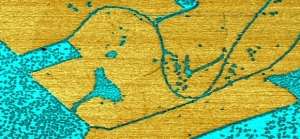Nov 26 2013
"If you can't measure it, you can't improve it and you can't control it" was the verdict of a National Physical Laboratory (NPL) roundtable discussion held at the Institute of Physics (IOP).

Graphene is a crystalline form of carbon with a hexagonal arrangement of atoms and NPL is carrying out a series of National Measurement System (NMS) funded projects dedicated to researching metrology for the characterisation of graphene and other 2-D materials and helping develop standardisation which will be important to future applications and mass production.
Representatives from the Department of Business Innovation & Skills, Institution of Mechanical Engineers, Royal Society of Chemistry, National Graphene Institute (NGI), Cambridge Graphene Institute and other stakeholders from industry and SMEs filled the seats to hear the opening address by NPL's Managing Director, Brian Bowsher. Dr Bowsher outlined the fundamental science in this area that has been ongoing at NPL, which in the last three years has led to over 25 published papers, including a recently published review on Quantum resistance metrology using graphene in Reports in Progress in Physics.
Dr JT Janssen, NPL Fellow in Quantum Electrical Metrology, also gave a short introduction to 'Graphene and other 2-D crystals'. Dr Janssen is responsible for research on quantum electrical standards and leads a multi-disciplinary team of scientists who are studying the real-time methods for the measurement of key properties of graphene and other 2-D materials.
Round table discussions followed the introductory remarks to discuss the future 'real life' applications of graphene; how metrology can accelerate the development of graphene and the UK's strengths in this area.
At the end of the summary from the roundtable discussions, IOP and NPL attendees and their guests joined together for a reception and speeches. Professor Alison McMillan, a Vice Chair of the IOP, hosted this part of the evening with speeches from Nathan Hill, NGI and Mike Worboys (Acting Director, BAE Systems Advanced Technology Centre).